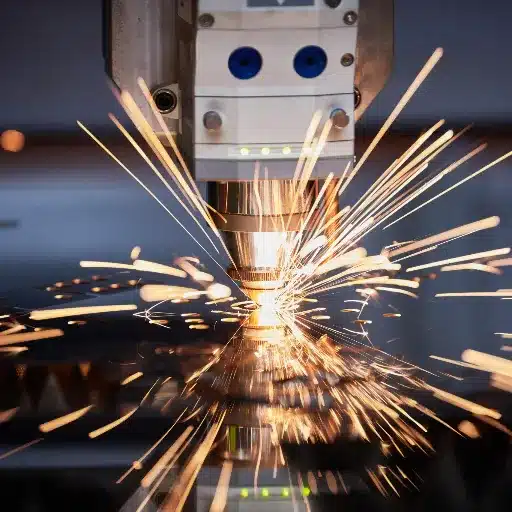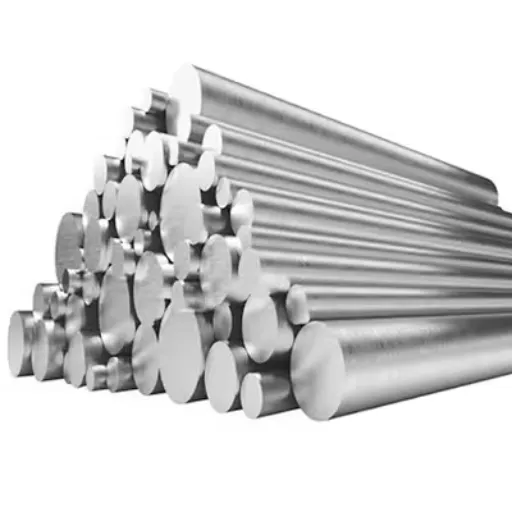The malleability of stainless steel and its specific other properties like corrosion resistance make it one of the most used materials in various industries. Choosing a particular grade of stainless steel for a specific task is difficult, as these materials have specific characteristics that must be understood first for engineering or industrial use. Stainless steels of grade 416 and 316 arethe two types most commonly used, and their differences are essential for proper stainless steel selection.
Here, I detail the most critical variables that distinguish both alloys from each other: composition, mechanical properties, corrosion resistance, machinability, and typical applications. After reading this, the audience will appreciate the differences between the two stainless steel grades and stipulate their desired project outcomes while being cost-effective. This is particularly important when dealing with questions and problems of materials in manufacturing, construction, or medical devices.
What are the Main Differences Between 416 stainless steel and 316?
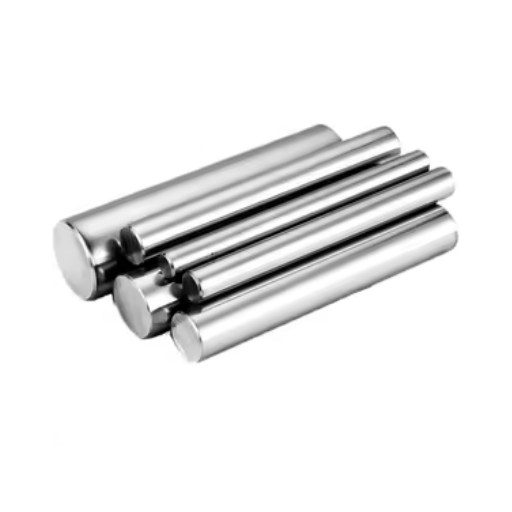
The differences between 416 and 316 stainless steel surfaces can be observed in their specific composition, properties, and applications.
- Analysis of Composition:
- 416 stainless steel has a high sulfur content, which makes it machinable, as it has the lowest corrosion resistance of all martensitic grades due to poor chromium and nickel acceptance.
- 316 is an austenitic grade containing chromium in the range of 16-18% and nickel in the range of 10-14%. The addition of molybdenum in the quantity of 2-3% makes 316 steel more resistant to corrosion through chlorides and marine environments.
- Corrosion Resistance:
- 416 is better for anti-corrosive environments due to its sulfur content, which limits resistance in harsh marine environments.
- 316 is vastly superior in resistance against chemical processing, particularly with salt water, and in food due to the surrounding environment.
- Mechanical Properties:
- In terms of strength, 416 has moderate strength but remarkable machinability; therefore, it is better for precise parts that require a lot of machining.
- Compared to 416, 316 is much stronger but lacks any form of friendlessness.
- Applications:
- 416 can be observed in the production of shafts, gears, and any other component that is highly precise and easily manufactured.
- This makes 316 ideal for surgical instruments, some marine equipment, and industrial tools and machines that are exposed to strong chemicals or salt water.
Considering these differences, users can select the alloy that best meets their project’s environmental and mechanical constraints.
Mechanical Properties of 416 Stainless Steel
416 stainless steel is a martensitic grade designed with excellent machinability and moderate corrosion resistance. It has a tensile strength of about 515 to 760 MPa, based on the grade of heat treatment received, on top of being able to be made more tempered. The alloy has a yield strength of approximately 275 MPa when in an annealed state, which makes it suitable for repairment-intensive machining. While 416 has lower corrosion resistance compared to austenitic grades such as 316, it effectively balances actual machining and mechanical strength, making it ideal for precision-engineered components.
Comparing Corrosion Resistance in 416 and 316
The difference in corrosion resistance between the 416 and 316 grades lies in their chemical compositions. As a martensitic grade, type 416 stainless steel has a chromium percentage of only 12-14%, with no significant nickel additions, which diminishes its capability to withstand corrosion in hostile conditions. Due to its high nickel content, this alloy is susceptible to rusting and pitting which is further accelerated by the presence of acidic or chloride conditions.
On the other hand, type 316 austenitic stainless steel has higher chromium (16-18%), molybdenum (2-3%), and nickel (10-14%) contents to provide increased resistance to corrosion. Due to the presence of molybdenum, 316ss has greater resistance to pitting and crevice corrosion, allowing it to be used in marine and chemical environments where chloride exposure is commonplace.
Key Technical Parameters:
- 416 Stainless Steel
- Chromium Content: 12-14%
- Nickel Content: <1%
- Corrosion Resistance: Limited, suitable for mild environments.
- 316 Stainless Steel
- Chromium Content: 16-18%
- Molybdenum Content: 2-3%
- Nickel Content: 10-14%
- Corrosion Resistance: Superior, suitable for harsh environments with chlorides.
Choosing the right alloy for an application should focus not only on machinability, which is better in 416 but also on the level of corrosion resistance required, wherein 316 is favorable. The choice is made depending on the intended use and operational performance needed.
Role of Nickel in 316 Stainless Steel
The role of nickel in 316 stainless steel is imperative to the improvement of corrosion resistance and an increase in mechanical properties due to its stabilizing effect on the eutectoid structure. In its presence, toughness and ductility at low temperatures get better, and the material’s ability to be formed and welded. In comparison to the other elements, nickel improves resistance to pitting and crevice corrosion when exposed to chlorides, proving 316 to be far more reliable for demanding applications.
How Does Machinability Affect the Choice Between 416 and 316?

Regarding free machining, stainless steel 416 is far preferable due to its higher sulfur content. Provided sulfur improves free-machining capabilities, reducing production time and tool wear. This makes the steel ideal for highly intricate machining or even mass production. On the other hand, the ductility of 316 stainless steel is higher due to the lack of added sulfur, which reduces the machinability of the steel and increases tool-consuming problems. Compared to 416, 316 is far more resistant and strong towards corrosion, which does mark down concerns regarding machinability in powerful chemicals or extreme conditions. Therefore, the requirements for manufacturing efficiency versus corrosion resistance balance out the need for productivity.
Why Machinability is a Critical Factor
Machinability significantly impacts manufacturing productivity, costs, and depreciation of tools; this is why it is essential. In my evaluation, 416 stainless steel is among the best-machined steels manufactured due to its drastically lower production time and tool wear, making it the most suitable for high-volume and complex machining projects. On the contrary, 316 stainless steel is more difficult to machine, but its strength and corrosion resistance make it essential in extreme environmental applications. In the end, it comes down to balancing the machinability requirement with the final products’ operational constraints.
Machine Efficiency with 416 Stainless Steel
According to my research and professional experience, 416 stainless steel is the most straightforward machine of all stainless steel, especially martensitic stainless steel. Its elevated sulfur content aids chip removal in machining, reducing machine downtime and increasing efficiency. In my experience, 416 stainless steel, when compared to other stainless steels, is easier to cut and causes less abrasion on tools, increasing tool life. This steel grade is the best choice for industrial tasks requiring extreme accuracy and fast production, like machining gears, shafts, and fasteners. Even though its corrosion resistance is not as good as that of 316 stainless steel, I would prefer 416 when machining is the main focus, as long as the environment doesn’t require high resistance to aggressive chemicals or salty water.
Working with 316 Stainless Steel in Industrial Applications
In my industrial work involving 316 stainless steel, I emphasize its notable resisting corrosion trait and performance in harsh conditions. With the addition of molybdenum, this alloy is well suited for use in chloride, marine, or other chemically harsh environments. While more challenging to machine than 416 stainless steel, I can increase efficiency and accuracy by employing slower feed rates, better cutting tools, and good lubrication. Ultimately, my final decision comes down to the material’s durability and resistance to severe conditions, which overrule any machining considerations.
What are the Common Uses of 416 and 316 Stainless Steel?
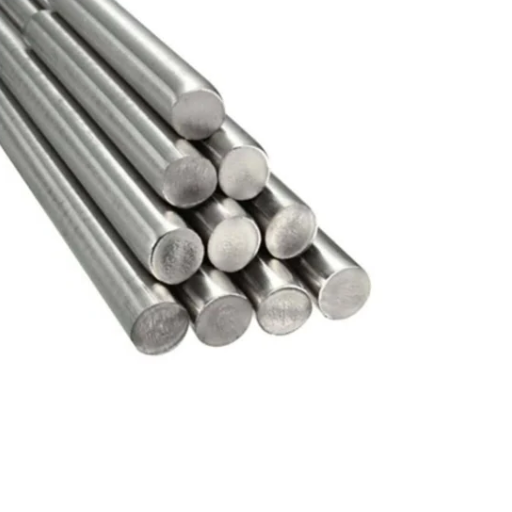
The production of industrial valves, pump shafts, bolts, and screws involves using precise 416 stainless steel, as it is simple to machine and works efficiently. The steel’s machining ability makes it an optimal choice for bulk production of complex parts.
Unlike 416 stainless steel, 316 steel suits environments requiring high corrosion resistance. Because of its capability to withstand aggressive environments, it is widely used in marine equipment, food-grade instruments, medical equipment, and chemical processing plants. It can also withstand pitting and crevice corrosion, helping to increase its utility.
Application of 416 Stainless in Automotive
The automotive application of 416 stainless steel is concentrated on components requiring strength, corrosion resistance, and machinability. These typically include shafts, gears, and fasteners, which require accuracy and efficiency in production. Compared to other stainless steels, including sulfur in the composition improves machinability but decreases corrosion resistance.
Technical Parameters of 416 Stainless Steel in Automotive Applications:
- Yield Strength: Reasonable at 415MPa (60,000psi) for moderately loaded parts.
- Hardness (Rockwell C): Varied between 20 and 36, based on heat treatment, ensures wear resistance in mobile components.
- Machinability: Estimated at 85%, making it the most machinable for stainless steel in mass production.
- Corrosion Resistance: Satisfactory for less aggressive environments and can be aided with adequate surface treatments or coatings to extend the lifetime.
- Operating Temperature Range: Reasonable up to 750 degrees Fahrenheit (399 degrees Celsius), suitable for most automotive working conditions.
Though 416 has many advantages, it is not suited for highly moist, saline, or chemically active environments where other more resistant alloys, such as 316 stainless steel, are more desirable.
Industries Benefiting from 316 Stainless Steel
Because of its durability and exceptional strength, 316 stainless steel is extensively used in different industries, especially the marine industry, which employs 316 stainless steel in regions where saltwater and harsh environments require materials with such resistance. Its hygienic properties in the food processing industry make it non-reactive and safe for contact with various food products. Moreover, the pharmaceutical and medical device industries benefit from the ability of stainless steel to withstand chemical corrosion during sterilization processes, thus allowing it to maintain structural integrity. Because of these, 316 stainless steel is a versatile choice for demanding and specialized environments.
Why 316 is Preferred for Pump Shafts
316 stainless steel is the go-to choice when selecting materials for pump shafts because of its excellent resistance to corrosion, strength, and versatility. Its resistance to pitting and crevice corrosion guarantees low maintenance and reliability over time, particularly in environments prone to chlorides or saltwater. It also has a fantastic yield strength of 205 MPa minimum and tensile strength of 515-750 MPa, meaning it can take the operational stresses in pumps. In addition, it is cancer-free and resists chemicals, which makes it suitable for marine, chemical processing, and pharmaceutical industries. The operational efficiency and lifespan of pump shafts are greatly improved with 316 stainless steel.
Why is Corrosion Resistance a Critical Factor When Selecting Stainless Steel?
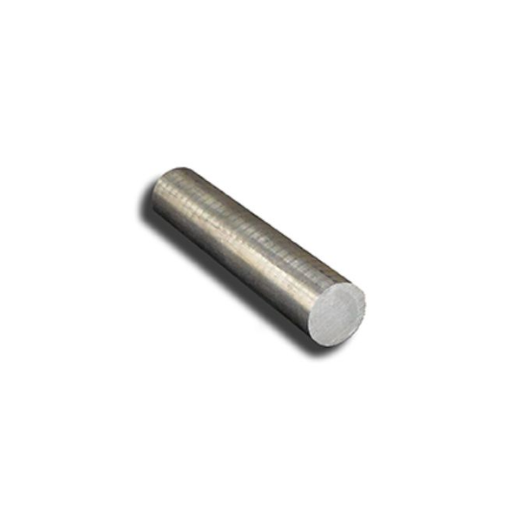
Resistance to corrosion twofold influences the choice of stainless steel. Its impact can be noted in the corrosion’s capability of damaging the material physically, leading to structural collapse, safety burdens, financial hardships, maintenance reconstruction, and increased disassembling. High resistance to corrosion, particularly 316, and stainless steel are best suited for chemicals, moisture, and saltwater as these factors tend to corrode standard materials much quicker. In industrial settings, stainless steel can withstand corrosion, lowering the frequency of replacements and component breakdowns.
Understanding Resistance to Pitting in Different Grades
My assessment of stainless steel grade’s resistance to pitting is based primarily on the alloy composition and the specific use environment of the material. For example, 316 stainless steel has a more excellent resistance to pitting than 304 stainless steel due to its more excellent molybdenum content. The added molybdenum helps resist corrosion due to chlorides, which is helpful in marine and chemical environments. However, for some applications, aggressive conditions may be encountered, which pitting-resistant grades like 2205 duplex stainless steel or super austenitic alloys are better suited for. Choosing the proper grade depends on chloride concentration, temperature, and exposure time to ensure the least localized corrosion.
The Impact of Superior Corrosion Resistance on Longevity
In my experience, increased corrosion resistance dramatically enhances the service life of materials in hostile working environments such as marine, chemical processing, and humid conditions. Different alloying constituents on an alloy, like chromium ( 16% at the least) and molybdenum (2 to 3%), alongside nitrogen, help improve the corrosion resistance to pitting and crevice corrosion. Duplex stainless steel (2205, for instance) has a PREN (Pitting Resistance Equivalent Number) value greater than 34, which means it can withstand highly corrosive environments. Such environments have high concentrations of chlorides. Moreover, surface finish (polished to aid in lowering the number of crevice sites) and good upkeep influence enhanced durability. In conclusion, choosing materials based on these considerations ensures that economical and secure use throughout the life of the material is achieved.
Choosing the Right Alloy for Marine Environments
Choosing the right alloy for use in marine settings entails balancing its corrosion resistance, mechanical strength, and economics. Aquatic environments are highly corrosive, considering the presence of chlorides, high humidity, and possible temperature fluctuations. This makes material selection for long-term use critical.
- Stainless Steels
Stainless steels, particularly austenitic and duplex grades, are popular due to their local corrosion resistance. For instance, 316L stainless steel is a common choice because it has about 16-18% chromium, 10-14% nickel, and 2-3% molybdenum. 316L stainless steel performs well in saline conditions. Duplex stainless steel, such as UNS S32205, is a viable option in more aggressive conditions because it has higher strength and stress corrosion cracking resistance. Duplex stainless steel also has a PREN greater than 34, making it ideal for chloride-rich environments.
- Nickel-Based Alloys
Due to its composition, Westlund et al. suggest using Alloy 625 (Ni-Cr-Mo) in extreme marine conditions. This alloy contains about 58% nickel, 20-23% chromium, 8-10% molybdenum, and other elements, such as niobium. These alloys resist pitting, crevice, and stress corrosion cracking, improving their durability in aggressive seawater conditions.
- Alloys of Aluminium
Aluminum alloys such as 5083 and 6061 are lightweight materials for marine structures and vessels. The oxide layer protects these alloys from corrosion, although not as well as stainless and nickel-base alloys with high salinity or submerged conditions. Magnesium addition to 5083 aluminum (around 4-4.9%) makes it more corrosion-resistant in seawater.
- Copper and Nickel Alloys
Copper-nickel alloys (e.g., 90-10 Cu-Ni) have impressive corrosion resistance and are particularly useful in marine applications involving pipes and heat exchangers. This Cu-Ni alloy consists of 90% copper and 10% nickel, and apart from resisting biofouling, it also resists stress corrosion cracking, all while providing reasonable strength.
Key Technical Parameters to Consider:
- PREN (Pitting Resistance Equivalent Number): The higher the PREN value, the more excellent the resistance to localized corrosion. For instance, alloys with PREN above 32 (For example, 2205 duplex stainless steel) perform well in seawater environments.
- Yield Strength: High-strength alloys such as duplex stainless steel (450 MPa minimum for UNS S32205) increase material thickness savings.
- Corrosion Rate: Alloys with a corrosion rate lesser than 0.01mm /year in seawater are favored.
- Thermal Conductivity: Copper-nickel alloys are quite useful for heat exchangers due to their excellent thermal conductivity (up to 40 W/m·K).
A thorough comparison assessment of these materials with specific requirements for marine application will enable the selection of an alloy that offers the best combination of strength and value.
How Do Mechanical Properties Compare Between 416 and 316?

The mechanical properties of 416 and 316 stainless steels differ significantly owing to their composition and intended use. 416 is a martensitic stainless steel with easy-to-machine features, which is more challenging and has higher hardness and tensile strength (760 MPa) compared to 316. However, there are some complications with this type of steel, one of which is its lower degree of corrosion resistance. 316, austenitic stainless steel has higher resistance due to having more significant amounts of chromium and molybdenum, making it suitable for marine and chemical environments. On the other hand, it has a lower tensile strength (approximately 515 MPa), but superior ductility and toughness compensate for this. Therefore, the decision always balances strength and corrosion resistance, depending on the application’s particular mechanical and environmental requirements.
Exploring Tensile Strength in 416 vs 316
Considering the comparison of the tensile strength of stainless steel, 416 indeed surpasses the tensile strength of 316 stainless steel because it can offer strength up to 760 MPa. In comparison, 316 stainless steel can only provide about 515 MPa. However, depending on the application’s requirements, I will pick either. If I want strength and superior machinability, I will go with 416. However, for very corrosive environments, say chemicals or marine applications, I prefer 316, even if I have to let go of some strength for ductility and toughness. Ultimately, it becomes a matter of deciding which to give more consideration to, the strength or the corrosion resistance.
The Importance of Yield Strength in Structural Applications
Examining yield strength indicates maximum stress durable to be sustained for a certain period and is set to yield strength minus some deformation magnitude for structural applications. A set of parameters regarding safety, rigidity, and yield strength must be maintained under load. Important technical parameters are tensile stress, Young’s modulus, and safety factor. From my perspective, for construction steels, while evaluating yield strength depending on the grade, it is common to see a range of between 250 MPa and 500 MPa. Such values help engineers achieve an appropriate balance between the performance of materials and their economic cost.
Evaluating Wear Resistance in High-Stress Environments
It is imperative to assess material performance under highly challenging and rigorous conditions to assess its ability to resist wear in a highly stressed environment. From my perspective, these criteria need focused attention: Some form of hardness or toughness and some fatigue resistance from the list. Added value comes from engineering methods such as wear testing and microstructural analysis. Furthermore, engineering materials with specific coatings or alloys designed for certain stresses can more easily achieve longevity.
References
- AISI 316 Stainless Steel vs. AISI 416 Stainless Steel – MakeItFrom
- 416 Stainless Steel vs. 316: Key Differences – MFG Shop
- The Ultimate Guide to 416 Stainless Steel Grade – Tuolian Metal
Frequently Asked Questions (FAQ)
Q: What are the main differences between ss 416 and 316 stainless steel?
A: The main differences between 416 and 316 stainless steel are their composition and properties. SS 416 is a martensitic stainless steel known for its high strength and machinability, whereas 316 is austenitic stainless steel known for its excellent resistance to corrosion and toughness.
Q: How does the toughness of 316 stainless steel compare to 416?
A: 316 stainless steel generally has a higher toughness compared to 416. This is because 316 is an austenitic grade, which typically offers superior toughness over martensitic grades like 416.
Q: What applications are 416 ss and 316 stainless steel best suited for?
A: 416 SS is better suited for applications requiring high strength and easy machinability, such as fasteners and gears. On the other hand, 316 Stainless Steel is widely used in environments requiring resistance to pitting and crevice corrosion, such as marine and chemical processing applications.
Q: How does the corrosion resistance compare between 316 and 416 stainless steel?
A: 316 stainless steel is more corrosion-resistant than 416 due to its austenitic structure, which contains molybdenum. This makes 316 ideal for environments exposed to chlorides and other corrosive elements.
Q: Is 416 stainless steel a martensitic or austenitic grade?
A: 416 stainless steel is a martensitic grade. This means it has a higher carbon content than austenitic stainless steel, contributing to its strength and hardness.
Q: What is the Brinell hardness of 416 stainless steel compared to 316?
A: The Brinell hardness of 416 stainless steel is generally higher than that of 316 stainless steel. This is because 416 is a martensitic stainless steel known for its hardness and strength.
Q: Can 316 stainless steel maintain its properties at high temperatures?
A: Yes, 316 stainless steel maintains its properties at elevated temperatures better than 416. Its austenitic structure provides stability and resistance to scaling and oxidation at high temperatures.
Q: How does the machinability of 416 compare to 316 stainless steel?
A: 416 stainless steel generally offers better machinability compared to 316. This is because 416 is designed with sulfur additions, which enhance its machining characteristics, making it easier to cut and shape.
Q: Why is 316l stainless steel often preferred in medical applications?
A: 316L stainless steel, a low-carbon variant of 316, is often preferred in medical applications due to its excellent corrosion resistance and biocompatibility. This makes it suitable for implants and surgical instruments.


